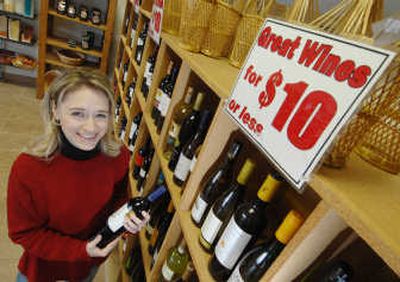Consumer extras are redefined in leaner times

MORGANTOWN, W.Va. – At The Wine Rack, where sales from the $10-and-under shelves are booming, Jocelyn Vorbach says aloud what most of her customers won’t: Friendships now have price tags, and dinner guests are gauged.
“There are friends who get the $300 Caymus and there are friends who get the $10 bottle,” Vorbach says. “They’re saying, ‘I like them, but I don’t like them THAT much.’ “
Even wealthier customers are stocking up on bargain bottles, though they tend to purchase by the case.
“Before, they wouldn’t be caught dead with a $9.99 bottle in their presence,” she says. “But now they will. As long as I tell them it’s a good one.”
It’s a matter of redefining luxury – and redefining nonessential – in an economy whose most consistent product may seem to be dismal daily headlines.
Ultimately, though, “essential” and “luxury” are personal definitions, choices driven not only by how much money remains when the bills are paid but also by our position on the social ladder, our sense of how to stay there and the feelings we get from the things we buy.
The numbers show Americans are already choosing: Starbucks is closing 100 underperforming stores. Sales of trucks, SUVs and roomy sedans are plunging. Retailers are slashing prices to lure shoppers back to the malls. Though 94 percent of us still pay our mortgages on time, some are giving up extras or tapping into savings to do so.
Even in a college town like this with a robust economy, people are cutting back.
“This car needs a catalytic converter, and it’s $800,” said Vicki Stemple, a registered nurse, who buys only the basics at Sam’s Club. “No way.”
Notions of what’s necessary and what’s extra are always changing, says Juliet Schor, a sociologist at Boston College. Dishwashers, air conditioners, washing machines and color TVs were once indulgences. Today, they’re basics.
Consumers now may be considering clothing labels and coffee brands or cooking at home versus dining out, says Schor, author of “The Overspent American: Upscaling, Downshifting and the New Consumer.”
When times are trying, the focus turns to value. And with awareness that neighbors are suffering, conspicuous consumption becomes less comfortable.
“So people postpone purchases. People take on less debt and pay off more debt,” Schor says. “In the portion of the income ladder where people are doing a lot of discretionary spending, there’s a lot more room for cutting back without getting into necessities.”
James Twitchell, advertising professor at the University of Florida and author of “Living it Up: America’s Love Affair with Luxury,” argues most people shop to meet desires, not needs.
“The feeling is, ‘I’m saved. I’m special. I’m worth it,’ ” Twitchell says. “Deep down people know that tap water tastes the same as the bottled stuff.”
Conventional wisdom suggests the rich are spared when the economy tanks. But that’s wrong, says marketing expert Pamela Danziger, who studies the consumption habits of Americans earning at least $75,000, about 32 million households.
“The idea that these people aren’t watching their money, that’s an illusion,” Danziger says. “They didn’t get to be affluent by throwing their money away.”